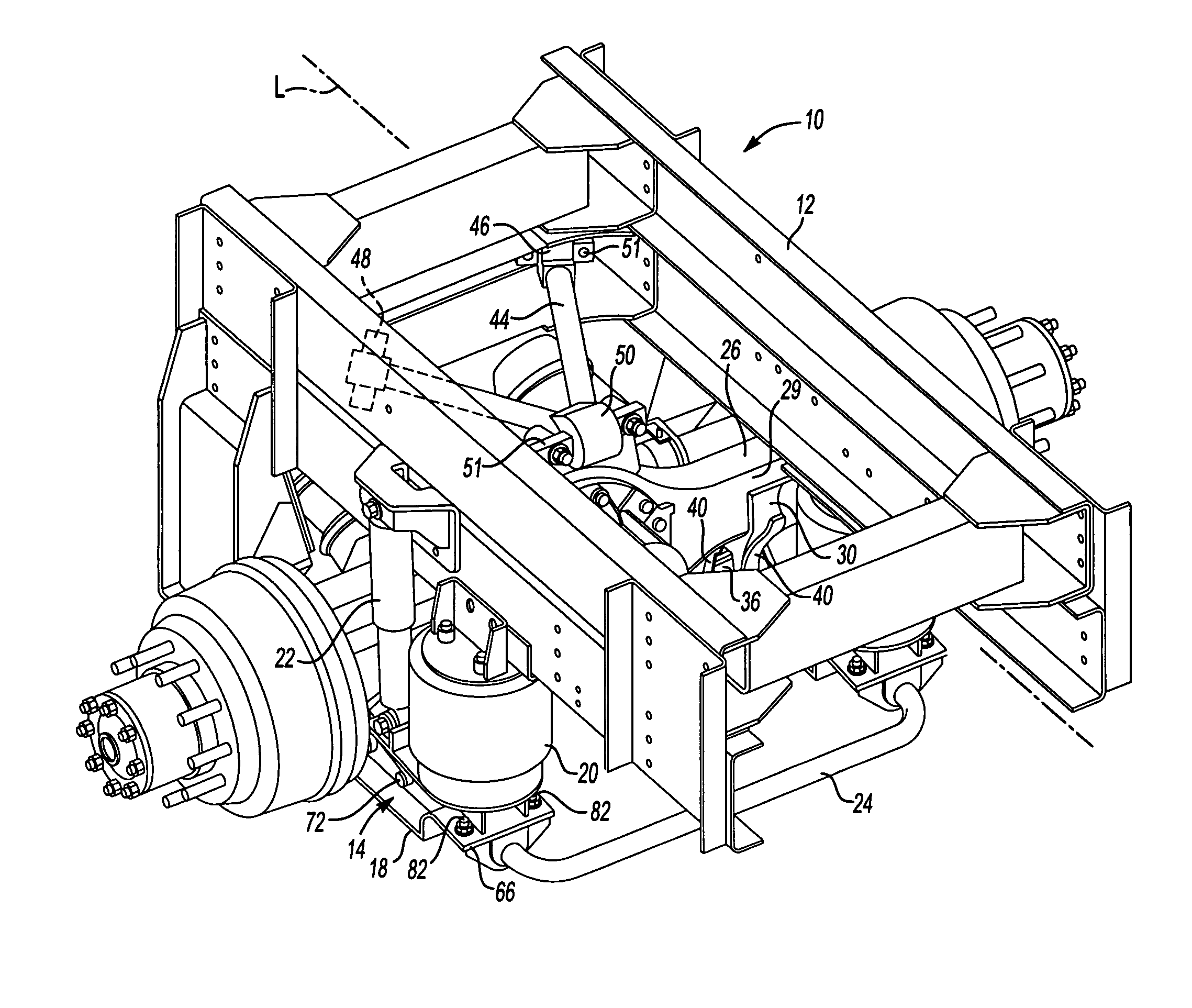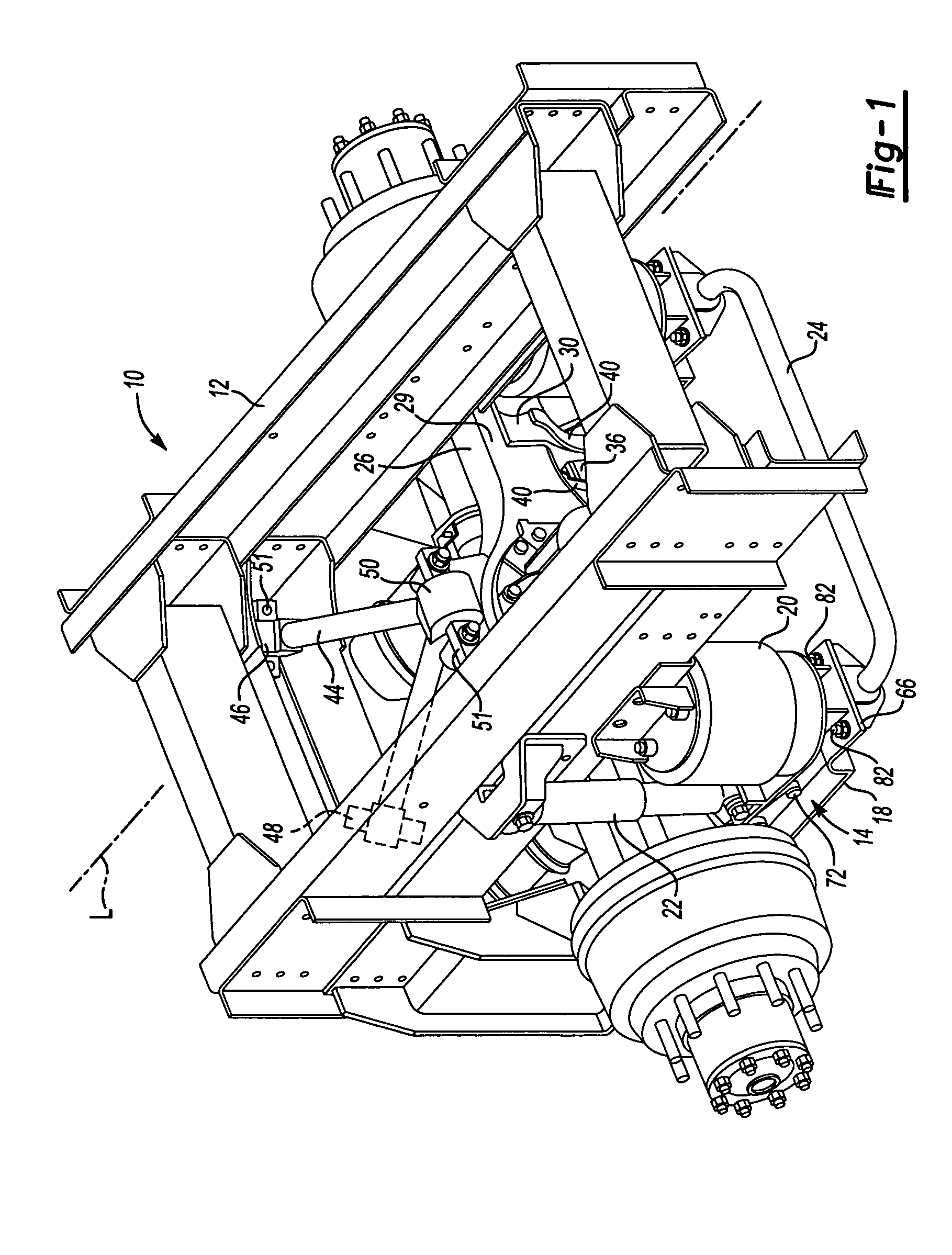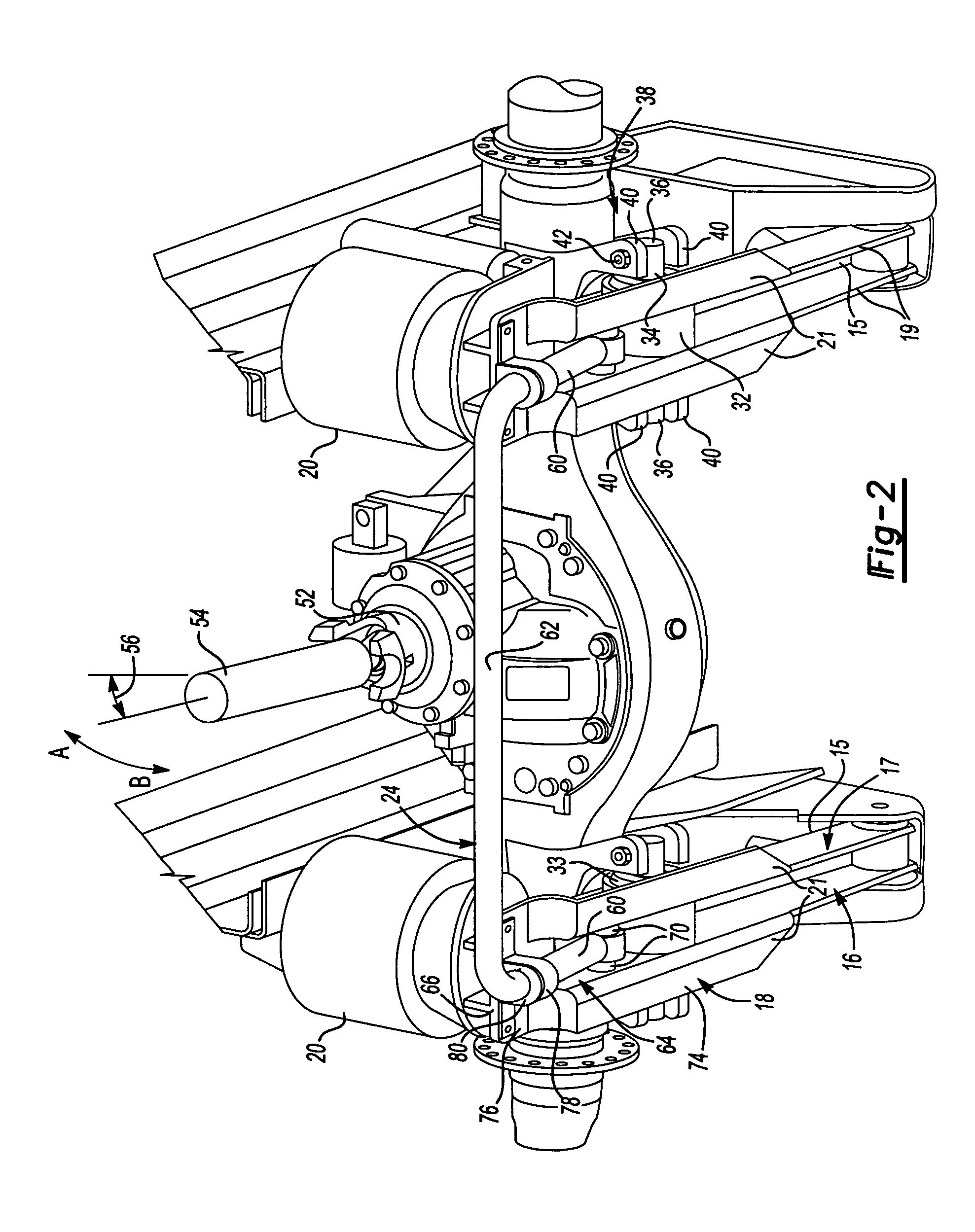Heavy duty trailing arm suspension system
a trailing arm and suspension system technology, applied in the direction of resilient suspensions, interconnection systems, vehicle components, etc., can solve the problems of rod configuration, plate lack of structural integrity as an upper attachment member, and difficulty in installation and servi
- Summary
- Abstract
- Description
- Claims
- Application Information
AI Technical Summary
Benefits of technology
Problems solved by technology
Method used
Image
Examples
Embodiment Construction
[0013] A suspension system 10 is shown in FIGS. 1 and 2. The system 10 includes a frame 12 that may include longitudinal rails, brackets, and other structural members secured by welds, fasteners or other attachment means. The suspension system 10 includes a pair of spaced apart trailing arms 14. The trailing arms 14 are preferably formed of a rather thick metal forming having opposing sides 19 and an upper wall 15 adjoining the opposing sides 19 to form an inverted U-shape. The lower side 16 has spaced apart flanges 21 extending outwardly from the opposing sides 19 and provides an opening forming a channel 64, as best shown in FIG. 2.
[0014] The trailing arms 14 include a forward portion 17 pivotally attached to the frame 12 and extending longitudinally rearward to a rearward portion 18. Air springs 20 and shock absorbers 22 may be arranged between the trailing arms 14 and the frame 12. An anti-roll bar 24 may be removably secured between the trailing arms 14 to provide stability to...
PUM
 Login to View More
Login to View More Abstract
Description
Claims
Application Information
 Login to View More
Login to View More - R&D
- Intellectual Property
- Life Sciences
- Materials
- Tech Scout
- Unparalleled Data Quality
- Higher Quality Content
- 60% Fewer Hallucinations
Browse by: Latest US Patents, China's latest patents, Technical Efficacy Thesaurus, Application Domain, Technology Topic, Popular Technical Reports.
© 2025 PatSnap. All rights reserved.Legal|Privacy policy|Modern Slavery Act Transparency Statement|Sitemap|About US| Contact US: help@patsnap.com



